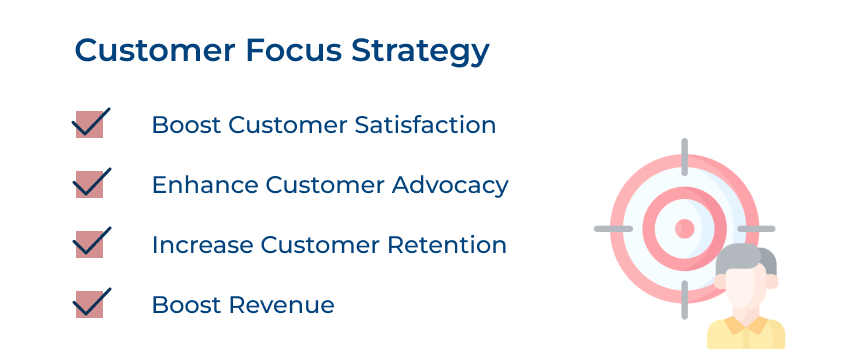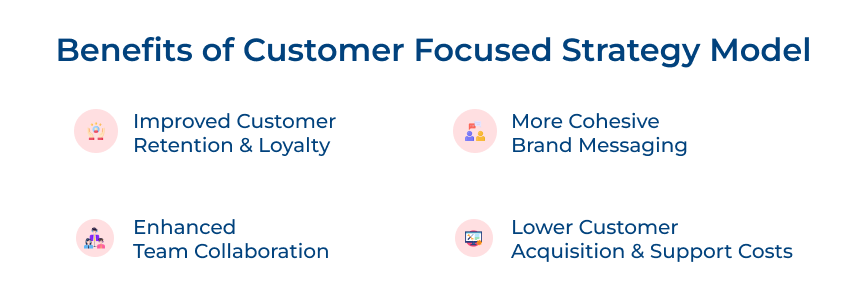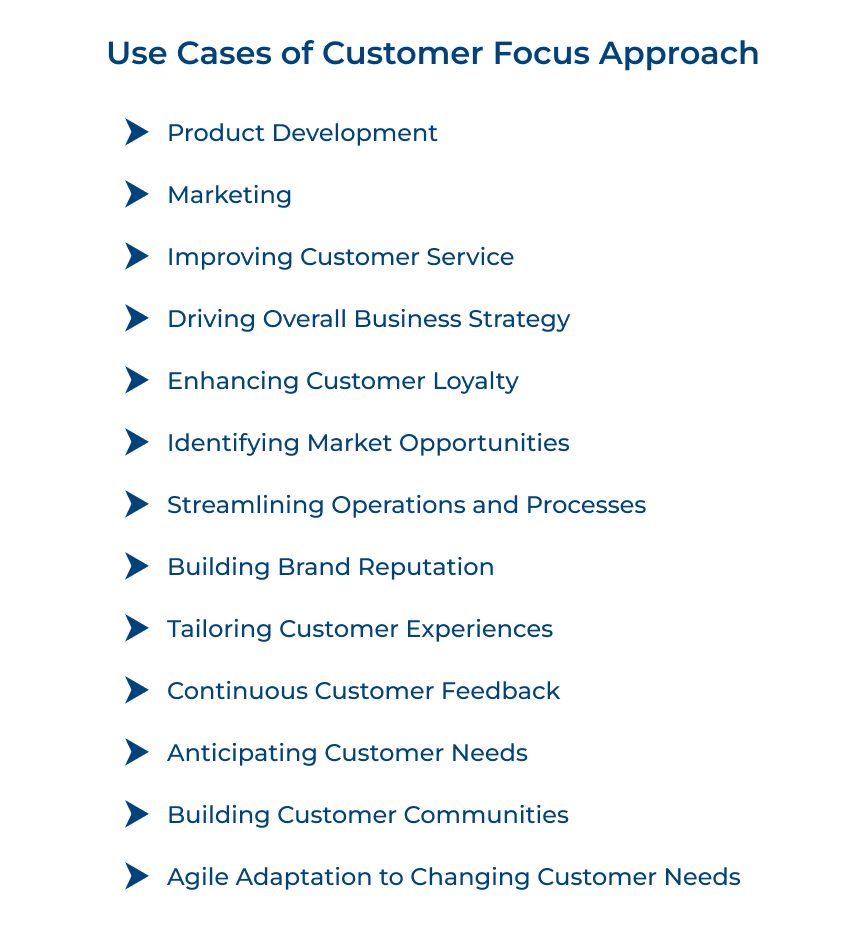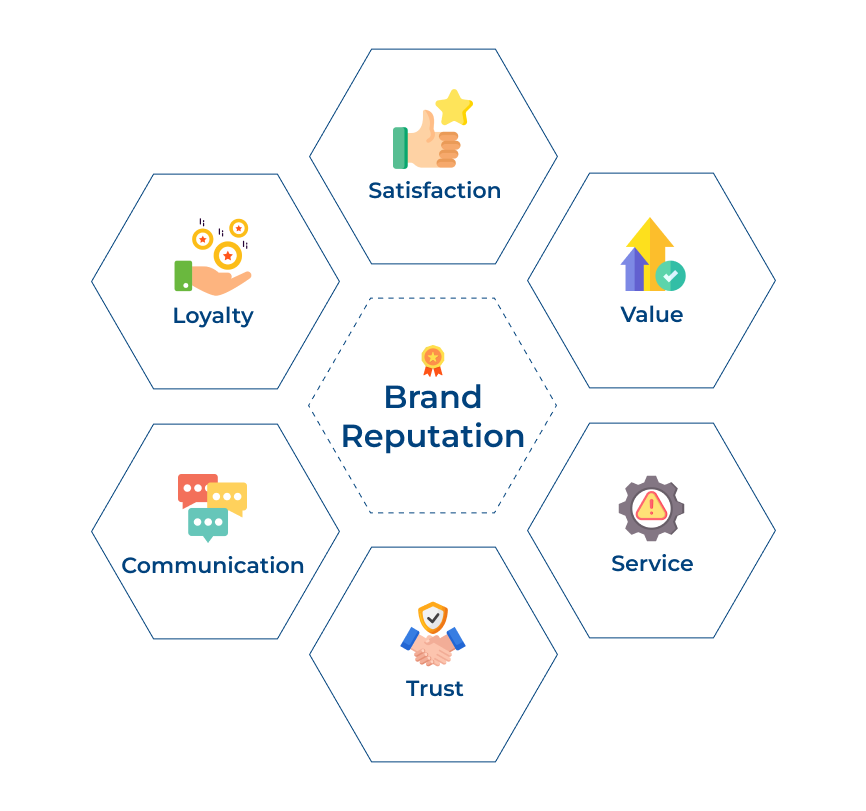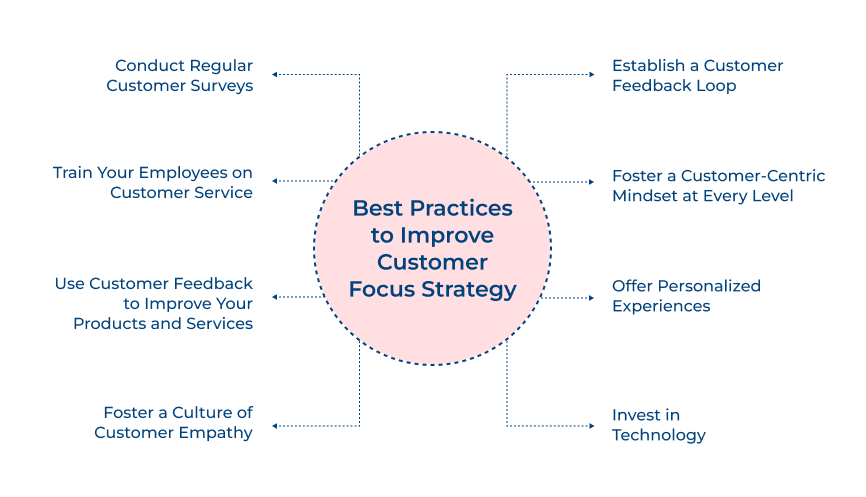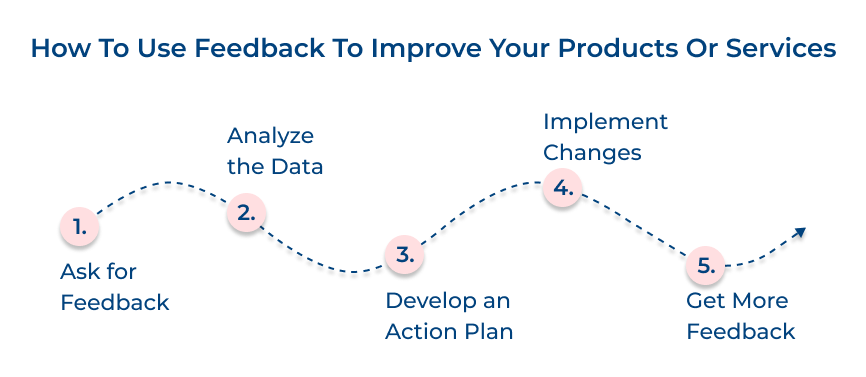Using feedback enables organizations to identify recurring themes, prioritize improvements, and align their offerings with customer expectations. Addressing customer concerns promptly resolves specific issues, builds trust, and strengthens customer relationships.
Best Practices:
- Implement a structured feedback management system to capture, analyze, and categorize customer feedback.
- Encourage your employees to request feedback during customer interactions as it will provide great insights
- Communicate with customers about the actions based on their feedback, demonstrating a customer-centric approach and promoting transparency.
4. Promote a Culture of Customer Empathy
Create a work environment that emphasizes empathy and encourages employees to connect with customers on an emotional level. Encourage employees to think from the customers’ point of view, empathize with their challenges and genuinely care about their demands.
The customer empathy culture will establish stronger customer relationships, drive customer loyalty, and inform decision-making processes. Teams working in such a culture will naturally approach and strategize everything from a customer-centric perspective.
Best Practices:
- Incorporate customer empathy training into employee development programs.
- Encourage regular cross-departmental meetings or events, facilitating direct interactions between employees and customers.
- Recognize and celebrate employee stories that demonstrate exceptional customer empathy.
5. Establish a Customer Feedback Loop
Implement a structured process for consistently capturing, analyzing, and acting upon customer feedback. Create a closed-loop system where customer feedback is shared with relevant teams, and required steps are taken to address the feedback. Regularly communicate with customers to provide updates based on their feedback, showing them that their input is valued and acted upon.
When a company considers the insights in its decision-making process, it facilitates innovation and product development. Listening to customers helps companies identify opportunities for new products or services that are aligned with their needs and preferences.
Best Practices:
- Use customer feedback management tools to centralize feedback collection, analysis, and action planning.
- Assign dedicated resources responsible for managing the feedback loop and ensuring timely response.
- Incorporate customer feedback in team meetings and performance evaluations as a regular agenda item.
6. Establish a Customer-Centric Mindset at Every Level
Instill a customer-centric mindset throughout the organization, from top leadership to frontline employees. Make customer focus a core value to integrate it into the organization’s mission, vision and values.
Encourage employees to take personal ownership of the customer experience and empower them to make customer-centric decisions. Regularly communicate customer success stories, testimonials and positive feedback to motivate employees.
Best Practices:
- Incorporate customer-centric values into job descriptions and performance evaluations.
- Recognize and reward employees who consistently demonstrate a customer-centric mindset.
- Promote a culture of innovation by encouraging employees to suggest and implement ideas that improve the customer experience.
7. Offer Personalized Experiences
Providing personalized experiences is crucial for businesses looking to enhance customer focus. Tailoring interactions and offerings to meet each customer’s unique needs facilitates stronger connections. Personalization is not something that a business should underestimate, as 72% of customers will only engage with personalized messaging.
Leveraging customer data and advanced analytics allows businesses to segment their customer base effectively. They are enabled to deliver highly relevant and tailored experiences at scale. Personalization increases customer engagement and boosts customer satisfaction, leading to long-term loyalty.
Best Practices:
- Gather comprehensive customer data from various touchpoints and channels to gain insights into individual preferences.
- Leverage marketing automation tools to deliver personalized messaging and offers.
- Regularly analyze the performance of personalization efforts and refine strategies based on customer feedback.
8. Invest in Technology
Technology investing is vital in improving customer focus and delivering exceptional experiences. Technologies like customer relationship management systems, chatbots, and artificial intelligence can enhance their experience.
Take a customer relationship management (CRM) system, for example. It enables organizations to centralize customer data, track interactions, and gain a holistic view of each customer. Chatbots and virtual assistants enhance customer support by automating routine tasks.
Best Practices:
- Identify your customer-focused strategy’s specific pain points and invest in technologies that align with those needs.
- Ensure chosen technologies integrate smoothly with existing systems and enable efficient data management, allowing for a unified view of the customer.
- Stay informed about technological advancements that can further enhance customer focus and be willing to adopt new technologies that align with your business goals or customer needs.
5 Examples of Customer Focus Strategy
Strongly emphasizing the customer, brands can cultivate a loyal customer base and position themselves as industry leaders. These brand examples show that businesses can create a competitive advantage and achieve long-term success by being customer service focused.
Etsy
What sets Etsy apart is its strong brand identity built around fostering community and connection among its users. They prioritize customer engagement and seek feedback to improve their platform continually. Etsy’s dedication to prioritizing the customer has propelled them to become a premier destination for buyers seeking distinctive and personalized products.
Kaiser Permanente
Kaiser Permanente is a healthcare provider operating in the United States. It has garnered a reputation for its enduring commitment to a customer-centric approach in healthcare. They prioritize patient experience to create a welcoming and comfortable environment in their healthcare facilities. They provide a diverse array of virtual healthcare options to cater to the evolving needs of their customers.
Ritz Carlton
Ritz Carlton, a luxury hotel chain, has built its brand around exceptional customer service. They prioritize personalization and attention to detail to create a memorable experience for every guest. Ritz Carlton empowers its employees to provide personalized experiences and encourages them to exceed customer expectations.
Sephora
Sephora is a worldwide retailer of beauty products. It has established itself as a brand focused on delivering a remarkable customer experience. They go to great lengths to provide personalized recommendations and ensure every customer feels valued. One of their most successful customer-focused strategies is their Beauty Insider program, which rewards loyal customers with free beauty products, exclusive sales, and invitations to special events.
Dos and Don’ts of Creating a Customer Focused Culture
The following are the essential do’s and don’ts of nurturing a customer-focused culture, ensuring your business not only attracts but also retains devoted customers who advocate for your brand.
Dos:
- Train employees to prioritize customer satisfaction: Make sure all employees understand the importance of customer satisfaction, and customer service training should be a fundamental part of new employee onboarding.
- Listen to customer feedback: Actively listen to customer feedback, noting their suggestions, complaints, and concerns as valuable insights to enhance products, services.
- Personalize customer interactions: Take the time to understand your customers and create personalized interactions per their preferences. Personalization can add immense value to your customer experience and create brand loyalty.
- Empower your employees to boost customer satisfaction: Empower your employees to exercise their judgment when addressing customer complaints. Granting them the freedom to go above and beyond in enhancing customer satisfaction is pivotal for cultivating enduring customer relationships.
- Reward customer loyalty: Create programs and incentives that reward customer loyalty, ranging from favorable prices, product promotions or special experiences.
Don’t:
- Don’t prioritize short-term benefits: Avoid prioritizing short-term gains that can negatively impact your long-term customer relationships. Make decisions that consider the lasting impact on your relationship with customers, steering clear of choices that may harm their trust or loyalty in the long term.
- Don’t ignore customer feedback: Listening to negative feedback and taking action is vital. Ignoring customer feedback can lead to increased customer churn rates.
- Don’t be fake: Customers can quickly identify fake and insincere interactions. Authenticity and sincerity must be at the heart of all customer interactions with your brand.
- Don’t set unachievable expectations: Set realistic expectations for your customers and avoid making promises you can’t deliver on. Setting achievable expectations allows you to promote trust, deliver on your promises and maintain strong customer relationships.
- Simplify your customer journey: Optimize it for user-friendliness and ensure a seamless customer experience when interacting with your business. Proactively identify and remove any obstacles or barriers that could impede customers from accomplishing their goals, enhancing their overall satisfaction.
Create Sustainable Business with a Customer Focused Mindset
Creating a sustainable business with a customer-focused mindset requires shifting our traditional business practices. Make the customer the focal point of all your endeavors and continuously adapt to meet their evolving needs. It will boost their satisfaction and drive ongoing success for our business.
Placing the customer at the core of our operations and continuously adapting to meet their evolving needs is crucial. Keep your customers on top of your priorities, even if it requires you to invest in a customer focus strategy tool. Businesses must adopt a customer-focused mindset and prioritize the development of sustainable solutions for a brighter future. Always remember that prioritizing your customers is the foundation for establishing a sustainable business today.






